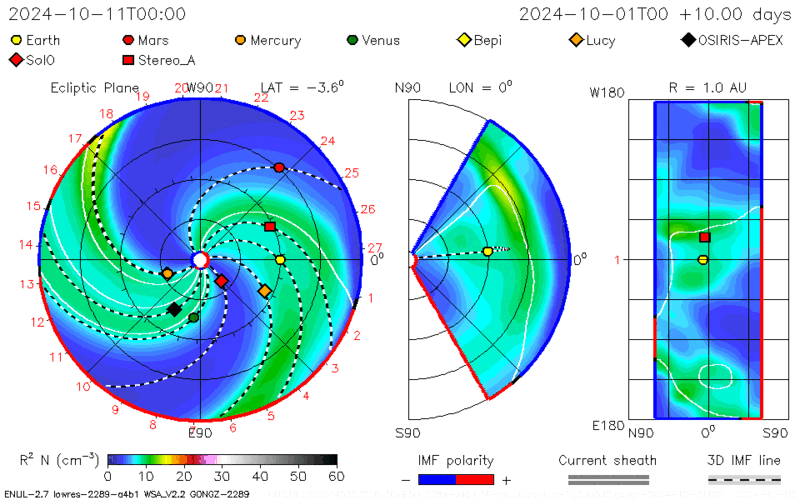Science
Monster X-class flare launches massive solar storm towards Earth — and could trigger auroras this weekend
The sun has unleashed an enormous X-class solar flare, temporarily triggering a radio blackout above parts of the U.S. and unleashing a hefty coronal mass ejection (CME) that will likely slam into our planet, potentially triggering vibrant aurora displays later this week.
The X-class solar flare — the most powerful type the sun can produce — exploded outward from sunspot AR3842 near the solar equator at around 6 p.m. ET on Tuesday (Oct. 1). The flare had a magnitude of X7.1, making it the second most powerful solar explosion of the current solar cycle, Solar Cycle 25, which began in 2019. The most powerful flare was a monster X8.7 magnitude blast in May, which was the most powerful flare in the last seven years.
Radiation from Tuesday's supercharged flare bypassed Earth's magnetic shield, or magnetosphere, and ionized the upper parts of the upper atmosphere, creating a temporary radio blackout above large parts of the Pacific Ocean, including Hawaii. The explosion also hurled a CME — a cloud of fast-moving plasma and radiation — into space, which NASA predicts will collide with Earth on Saturday (Oct. 5), according to Spaceweather.com.
When the CME hits our planet, it will likely trigger a disturbance in the magnetosphere, known as a geomagnetic storm, that enables solar particles to penetrate deep into the atmosphere and trigger vibrant aurora displays at unusually low latitudes. A similar geomagnetic storm occurred in mid-August after another X-class flare hurled a CME right at us.
Related: Could a powerful solar storm wipe out the internet?

The latest solar outburst is another sign that we have likely entered solar maximum — the peak of the sun's roughly 11-year solar cycle, which occurs right before its magnetic field completely flips.
Scientists had initially predicted that the solar maximum would begin next year and be less active than the peaks of past solar cycles. However, it quickly became obvious that the sun's explosive peak would arrive sooner and be more active than expected, forcing researchers to update their forecasts for the first time in their History.
-

 Science22m ago
Science22m agoHow to See the ‘Beaver’ Supermoon—the last of 2024
-

 Science4d ago
Science4d agoInside Capitol Hill’s Latest UFO Hearings
-

 Science4d ago
Science4d agoYou Won’t Want to Miss the Leonid Meteor Shower. Here’s How and When You Can See It
-

 Science5d ago
Science5d agoHere’s What Trump’s Win Means for NASA
-

 Science1w ago
Science1w agoWhy Risky Wildfire Zones Have Been Increasing Around the World
-

 Science1w ago
Science1w agoIt’s Time to Redefine What a Megafire Is in the Climate Change Era
-

 Science1w ago
Science1w ago4 Astronauts Return to Earth After Being Delayed by Boeing’s Capsule Trouble and Hurricane Milton
-

 Science1w ago
Science1w agoThe Elegance and Awkwardness of NASA’s New Moon Suit, Designed by Axiom and Prada



























